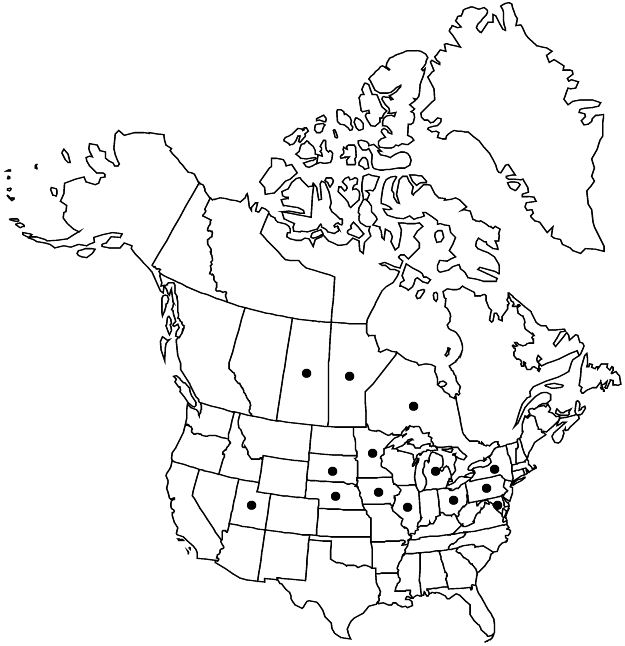Prunus tomentosa
in J. A. Murray, Syst. Veg. ed. 14, 464. 1784.
Shrubs, not suckering, 10–20 dm, not thorny. Twigs with terminal end buds, densely hairy. Leaves deciduous; petiole 2–7 mm, hairy, eglandular; blade obovate to oblong-elliptic, 3–6(–7.5) × 1.7–3.5(–4.7) cm, base obtuse to rounded, margins coarsely, singly to doubly serrate, teeth sharp, usually eglandular, sometimes glandular, glands dark, spheric, apex abruptly short-acuminate to acute, abaxial surface tomentose, adaxial rugose, hairy, sometimes sparsely so. Inflorescences usually solitary flowers, sometimes 2-flowered fascicles. Pedicels 0–5 mm, hairy. Flowers blooming before or at leaf emergence; hypanthium tubular, 3.5–6 mm, glabrous or sparsely hairy (especially at bases) externally; sepals spreading, ovate, 2.5–3.5 mm, margins serrate, sometimes glandular, abaxial surface hairy, adaxial glabrous; petals white to pale pink (pink in bud), obovate or elliptic to suborbiculate, 9–13 mm; ovaries glabrous proximally, villous distally. Drupes red, globose, 8–15 mm, sparsely hairy; mesocarps fleshy; stones ellipsoid, not flattened. 2n = 16.
Phenology: Flowering Apr–May; fruiting Jun–Jul.
Habitat: Roadsides, fencerows, vacant lots, riparian woods
Elevation: 50–500 m
Distribution

Introduced; Man., Ont., Sask., Ill., Iowa, Md., Mich., Minn., Nebr., N.Y., Ohio, Pa., S.Dak., Utah, Asia.
Discussion
Prunus tomentosa is cultivated as a landscape plant in hedges and as a background shrub because of its spreading habit and pale pink to white petals. It produces edible fruits that are said to make excellent jelly and juice.
Selected References
None.